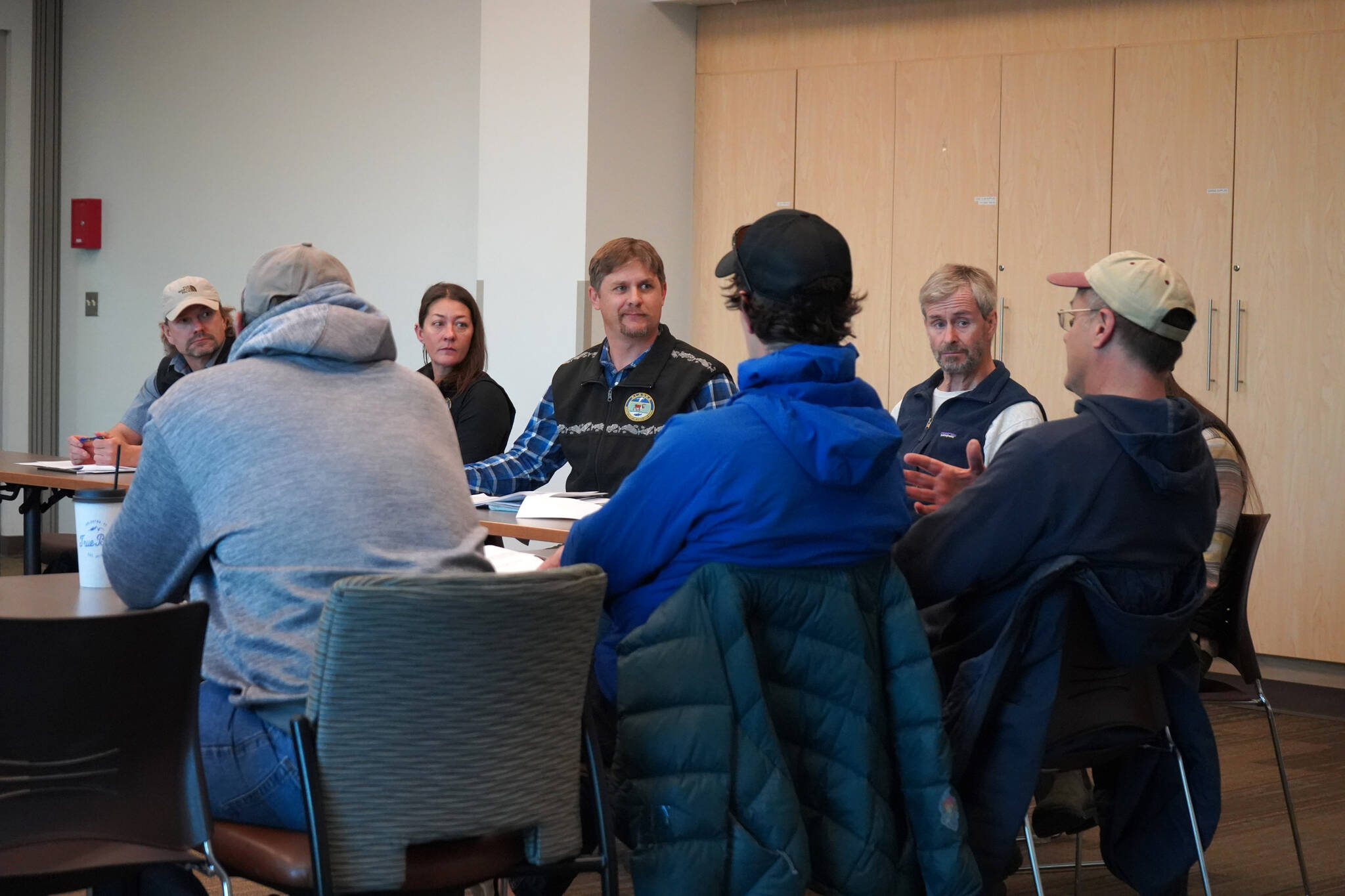Members of the State Department of Fish and Game’s Division of Sport Fish hosted a “Town Hall Style Meeting” to discuss the sport fisheries of the Northern Kenai Peninsula last week, taking questions from anglers and discussing preliminary results from this year’s fishing season.
Roughly two dozen people, representing different fisheries, user groups and organizations, sat around a large table as Acting Area Management Biologist Jenny Gates, Area Research Biologist Tony Eskelin and Director of Sport Fish Israel Payton took questions about sockeye escapement, local research projects and water chemistry.
Gates shared the preliminary 2023 summary for the Northern Kenai Peninsula, describing Kenai River king salmon runs that fell below escapement goals and sockeye runs that far exceeded goals. The summary also describes management actions taken by the department like shuttering king salmon fishing on the Kenai River and liberalizing sockeye salmon bag limits in areas like the Russian River. Coho salmon aren’t monitored for abundance, the report says, but “catches were reported as fair to good through August and fair into September.”
Information about dipnetting is still being compiled and will be released this winter, the summary says. The final estimates for escapement as described in the preliminary summary will not be available until next fall, it says.
After the summary, the trio spent more than an hour fielding questions from attendees. Most of the questions centered on king salmon.
Many asked about the impact of commercial trawling fisheries in the Gulf of Alaska on declining king salmon runs — to which Payton did not comment, but repeatedly pointed to a handout they had brought describing salmon bycatch management in the Gulf of Alaska and the Bering Sea.
In the Gulf of Alaska, that handout says, around 11,000 king salmon were harvested in 2021, 13,000 in 2022 and around 10,000 as of Aug. 24 in 2023. The handout notes that each of those years fall below the historical average of around 15,000.
Another line of questioning was in regards to the escapement of sockeye salmon and potential impacts to the ecosystem. For each of the sockeye salmon fisheries described in the summary, preliminary estimates show counts exceeding the upper bounds of escapement goals. On the Kenai River, around 2.4 million sockeye were estimated to have escaped, compared to an upper bound of the sustainable escapement goal set at 1.3 million.
The department said that they don’t have any information about whether high escapement can lead to problems with returns. Payton said as far as they know, the run has never failed to replace itself.
Alex Douthit led questioning about water salinity as a result of the road brine solution used by the Department of Transportation and Public Facilities to treat state roads during the winter. He said its use began in 2012, around when king salmon declines began to be observed, and asked the Fish and Game representatives if the department was studying potential impacts to streams as the solution enters streams via runoff during breakup.
Payton said declining king salmon returns aren’t exclusive to areas near roads, suggesting that water salinity isn’t the problem. Eskelin said the department could reach out to the Kenai Watershed Forum, who complete regular water chemistry monitoring, to see what they’re seeing in local streams.
The department was also asked about studies regarding salmon smolt survivability.
Eskelin said that smolt monitoring “especially on the Kenai,” is “incredibly difficult.” Payton said there would be interest in such a project, but that they would need to secure funding from outside the department. Also, he said that to create a complete set of significant data would take several years.
In response to some of the questions about king survivability, bycatch and even predation by animals like harbor seals or rainbow trout, Payton said that their information suggests that it’s what’s happening in the ocean that is making the biggest difference — “all points lead to ocean productivity.”
To view the full preliminary 2023 Summary for Cook Inlet Sport Fish Management Areas, visit adfg.alaska.gov. The report is in the “sport fishing” section under “fishing information” and “fishing reports by area.”
This story was edited on Tuesday to correct the number of late-run Kenai River sockeye salmon estimated by the Department of Fish and Game to have escaped this year.

